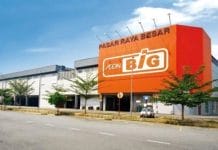RHB Regional Thematic Research cited today (July 25) that Malaysia’s construction emission cuts are underpinned by technology.
Malaysia’s Construction 4.0 Strategic Plan 2021-2025 emphasises technology usage, namely industrialised building systems (IBS) amongst others to facilitate sustainability.
Overall, IBS implementation in both government and private projects has increased to 84% (2020: 79.5%) and 60% (2020: 41%) in 2021. This indicates there is still room for growth in IBS implementation, which is able to reduce CO2 emissions/sqm. Sustainable rating tools by the Construction Industry Development Board (CIDB) play a role in promoting environmentally friendly projects.
RHB’s report which pinpoints key enablers in achieving the net zero carbon emissions target by 2050 across Malaysia, Indonesia, Singapore and Thailand. Its has been seen as timely as the building and construction sector saw operational carbon dioxide (CO2) emissions hitting a new high in 2021 – 2% and 5% more than the peaks of 2019 (pre-pandemic) and 2020.
Therefore, it is vital that we identify the way construction players are doing their part to cut emissions – these firms have to have higher-than-average ESG scores as per our proprietary methodology, which now puts greater emphasis on emissions.
Thailand’s Green Building Energy Code (GBEC) is the first compulsory energy consumption standard to have universal applications in Thailand. Prior to it, developers had to obtain “green building” certifications from four different authorities. Overall, cement accounts for the highest construction-related CO2 emissions in Thailand.
Therefore, Thai cement-related industry players have collaborated to reduce 1m tonnes of CO2 emitted in 2023 by encouraging all sectors to use hydraulic cement, which is an environmentally friendly building material.
Indonesia’s pathway is slightly different – it is committing to reach net zero emissions by 2060 (instead of 2050). In 2021, the Ministry of Public Works and Housing promulgated national mandatory regulations for the efficient use of energy and water, management of building sites, waste and indoor air quality.
These regulations imposed for most residential, mixeduse, office and hospital buildings are tied to the minimum performance standards of building envelopes, cooling equipment, lighting and other building systems
Singapore’s high rate of urbanisation is evidenced by the building and household sector’s c.20% contribution towards the nation’s carbon emissions. The Singapore Green Building Masterplan is in place to accelerate a low carbon environment via an 80-80-80 rule, ie 80% of gross floor area is to be green by 2030, 80% of new developments are to be super low energy buildings from 2030, and there should be an 80% improvement in energy efficiency (vs 2005 levels) for green buildings by 2030.
Net zero emissions stock ideas: Sunway Construction, Kerjaya Prospek, Gamuda, Siam Cement, CH Karnchang and ISOTeam. Gamuda has its own Gamuda Green Plan 2025, which aims to reduce its corporate greenhouse gas (GHG) emissions intensity by 30% by 2025, and by 45% by 2030 as compared to 2022.
Meanwhile, RHB highlighted Total Bangun Persada and Wijaya Karya Bangunan Gedung as non-rated ideas from Indonesia.









